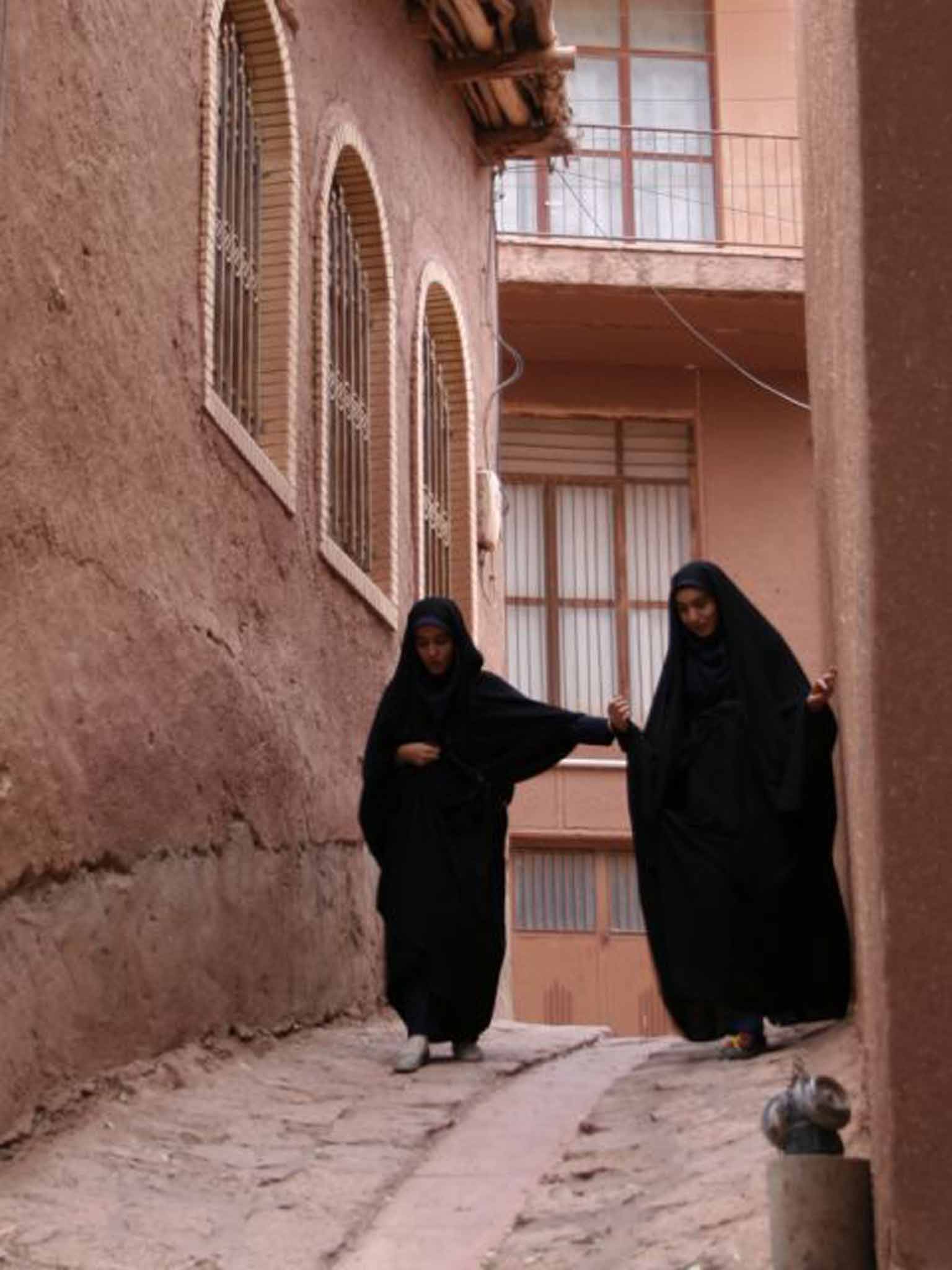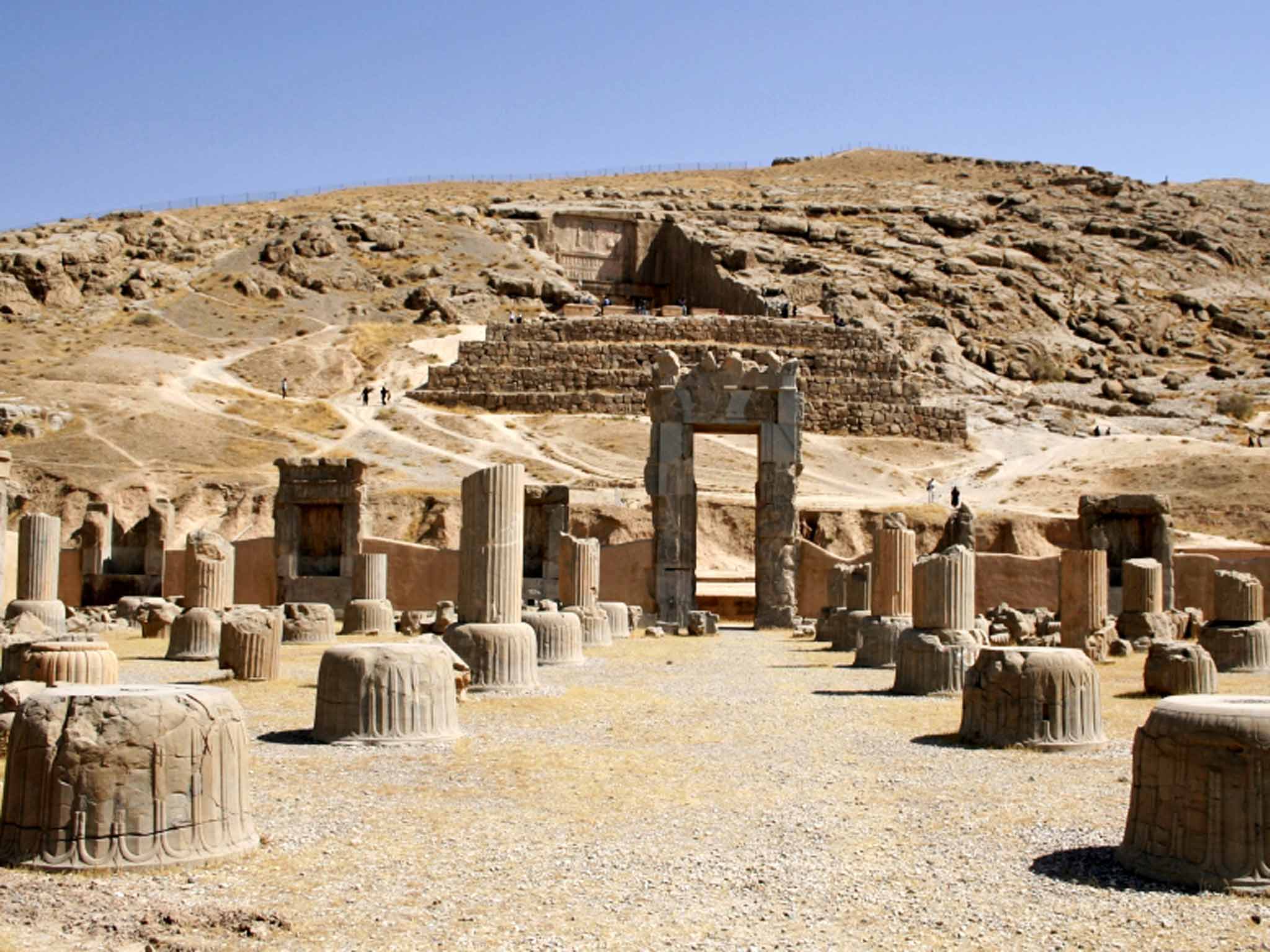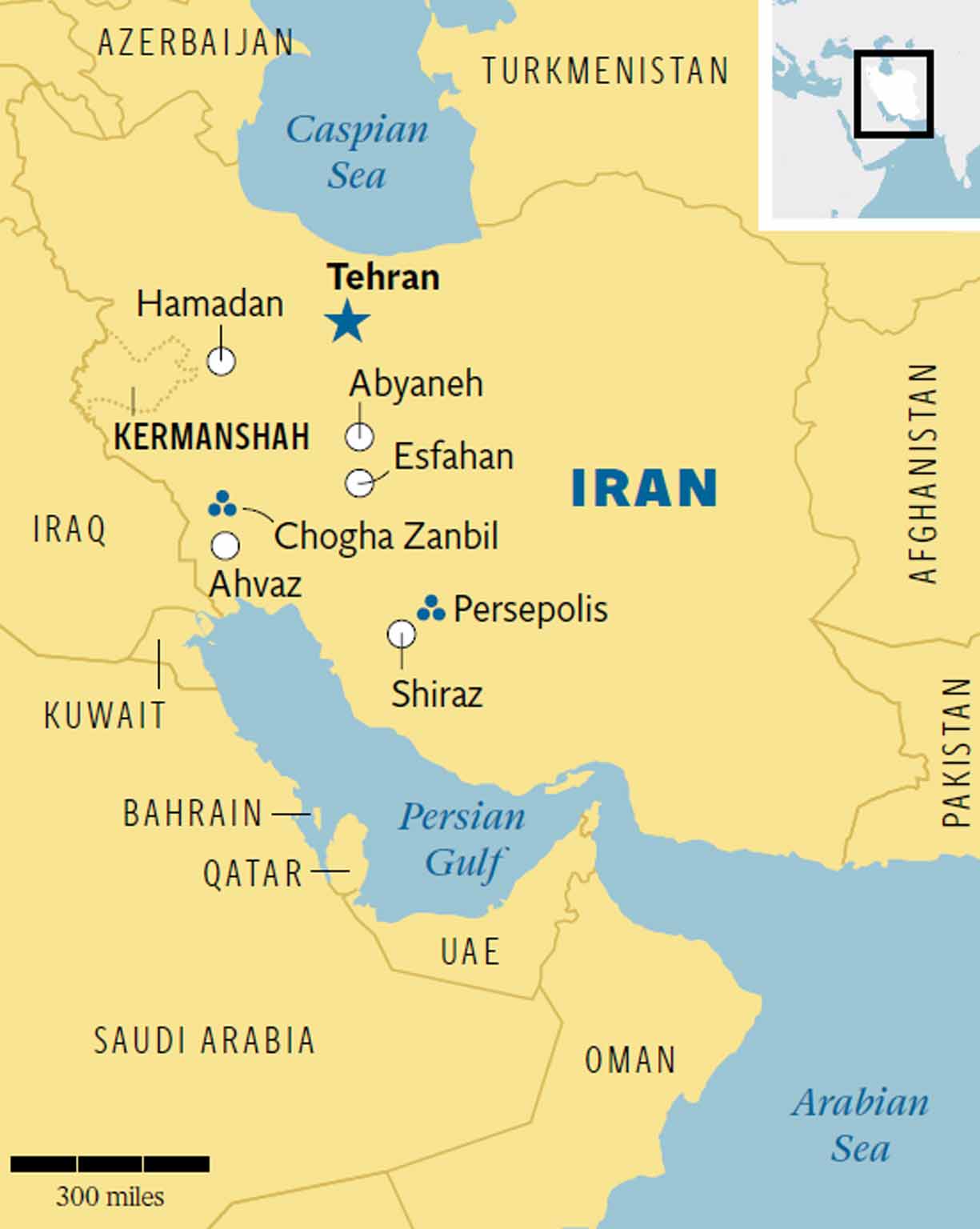Holidays in Iran? Those with an adventurous spirit are in luck
Improving relations between the republic and the West could open its treasures to tourists once again. Rob Hastings gets a taste of what to expect

Have I walked into a four-walled kaleidoscope? There must be 10,000 or more fragments of silvery glass dazzling my eyes as I struggle to take in the opulence of mosaics – made entirely with pieces of mirror – that cover every inch of the room I'm standing in.
This is the Green Palace, on the outskirts of Tehran. Kanye West could cover himself in glue and dive into a mountain of diamonds and still look less bling than this place. And yet it was here that Reza Shah, Iran's penultimate monarch, contrived to claim that he remained true to his roots – despite living in the most ostentatious surroundings imaginable – by shunning his bed and sleeping on the floor like the soldier he once was.
The history around me feels as much a part of the room as the sparkling light. The Sa'dabad compound of gardens and palaces, hidden among the peaceful woods and below the snow-capped mountains that overlook the Iranian capital, was built in the 1920s and 1930s. Yet it feels much older in a country that has changed greatly since then.
Some time after the 1979 revolution that toppled the final royal ruler, Mohammad Reza Shah, it was opened to the public to allow locals and tourists alike to wonder at the wealth of the deposed Pahlavi dynasty, as well as the bronze boots that are now all that remain of a giant statue of the old king.
I sense I'm a rarity among the visitors here. In recent years, few British faces will have seen their likeness distorted in the mirrored tessellations on the walls and ceilings. Since the uprising that eventually saw an anti-Western regime of Islamic clerics take power, relations between Iran and the UK have been suspicious at best and hostile at worst, not least in 2011 when protesters stormed the British embassy.
Diplomatic relations were swiftly suspended. Yet in the past 18 months, Iran's politics have begun to change just enough for those of us with an adventurous spirit to be in luck. It is, arguably, now one of the most stable countries in the Middle East.
There are hopes that London and Tehran will exchange ambassadors again, especially now that a preliminary agreement has been reached between Iran and the West, which should see it curb its nuclear activities and allow inspections of nuclear plants in return for the lifting of sanctions.
There were celebrations on the streets of Tehran last week and perhaps the coming months will see the nation's many archaeological treasures again host coachloads of Western tourists, rather than just the current mini-buses.
It was in one of these that I covered 1,500 miles on the desert highways, travelling with three Australians and a Canadian, along with a tireless driver and a charming tour guide. Beginning in Tehran, we drove for a fortnight, first to the city of Hamadan and on to the Kurdish lands of Kermanshah, down to the oil capital Ahvaz, across to the artsy cities of Shiraz and Esfahan, into the desert to stay among the Zoroastrians of mud city Yazd, before heading up into the hills for a night at the unspoilt village of Abyaneh, and finally back to Tehran.

The ancient history seen along the way is worth the trip alone. There are the ruins of Persepolis, the Persian capital 2,500 years ago; the mystical ziggurat at Chogha Zanbil, lost under western Iran's shifting sands for centuries only for the terraced pyramid to be spotted by oil prospectors and uncovered; and the huge cross-shaped tombs dug into the cliff at Naqsh-e Rustam, like Iran's own breathtaking answer to Petra in Jordan, but without the crowds of tourists.
However, it was the Iranian people and their hospitality that made the biggest impression on me. Their government's politics may be controversial, but the locals ensure their country is not a Middle Eastern North Korea, or the closed society that many Westerners might expect after watching Argo or Homeland. At times we felt almost like celebrities, especially when young men and women asked to have their photographs taken with us.
Tehran has plenty to see, but most of the capital's own residents would advise you to go further afield than its crowded urban sprawl, naming Shiraz as one of the priorities (though in these dry days of the Islamic Republic, you won't find any of the eponymous wine from the grapes that once grew here).
Nearly 600 miles south of Tehran, Shiraz is arty and easy-going, and a great place to experience Iranian hospitality. As I strolled into the old town around the citadel, I passed walls decorated with political murals of soldiers, songbirds and schoolchildren, down into the bustling bazaar, the air heady with the scent of spices, for lunch at the Seray-e Mehr coffee house.

If you don't like kebabs you may struggle in Iran, though here I tried dizi, a delicious concoction of lamb and vegetables served in a pot for you to mash personally before eating.
I received numerous, sincere invitations to dinner or tea and saying yes to one of them was the best decision I made during my time in Iran. I found myself being driven to a late- night café by a group of twentysomethings, who sang along to Pink Floyd and Dire Straits on the car stereo and treated me like an old friend. Farshad and Yasmin told me about their parties, their jobs and their families as we drank tea.
"We don't get many English speakers here," Yasmin told me. "We want the world to see the real Iran, how beautiful our country is."
Shiraz – famed for its green spaces, particularly the Eram Garden – is also known as the City of Poets. Two of its highlights are the tombs of its most revered lyrical sons: Saadi, the 13th-century wordsmith whose verse, Bani Adam, Iranians will proudly tell you is inscribed outside the UN headquarters in New York; and Hafez, of the 14th century. Standing in the shade of the cool marble pillars of Saadi's mausoleum the next morning and listening to his words recited in Farsi by my guide, Arsalan, was a magical moment.
Having a local expert like Arsalan accompanying our group often proved invaluable. His advice on the incredibly complicated monetary system was especially welcome; any price can be quoted in three different numbers (trust me, it's too complicated to explain), and you'll need to learn quickly which banknotes to hand over as – for now – sanctions mean that no credit or debit cards work here.
Nowhere, that is, apart from the boutiques of Esfahan, where the wily dealers have set up accounts in Dubai to take payment over the internet. Known as the cultural capital of Iran, Esfahan is home to some of the most beautiful architecture in the Islamic world.
Much of it is in one place: Imam Square, one of the world's largest plazas. I spent a whole day here, gasping in awe at the intricacy of the decoration inside the dome of the Sheikh Lotfollah Mosque; climbing the steep spiral stairs to see the delicate frescos painted on the walls of the Ali Qapu palace, where the shahs would entertain foreign dignitaries 500 years ago while looking out on polo matches (the sport originates in this city); and, of course, listening to the call to prayer echoing around the Imam Mosque.
Besides this, however, the square also hosts plenty of opportunities to spend your rials. Iran is famed for its miniaturists and, having watched Mostafa Fotowat at work in his shop-cum-studio opposite the Abbasi hotel, and studying his handiwork through a magnifying glass, I couldn't resist buying a miniature of the polo players who once rode in Imam Square.
However, it's the Esfahan's carpet sellers who are most worth a visit. At four showrooms, I was treated to a cup of tea and an educational display of rug after rug, hand-woven in wool or silk, learning about the different regions and techniques involved in their making.
After going back and forth to Hossein Peyghambary's showroom over the course of three evenings, I eventually bargained him down to a satisfactory price. As I packed my new purchase into my rucksack before heading back to the airport, it was hard to feel like I had actually visited Iran, so different was this country from the well-worn Western stereotypes that I had expected.
The revolutionary regime can be unforgiving and the politics may still sometimes be troubling, but the people and their proud Persian culture will live long in my memory – and there is now a small silken corner of my living room floor that is forever Iran.
Travel essentials
Getting there
Rob Hastings flew from Stansted to Tehran via Istanbul with Pegasus Airlines (0845 084 8980; flypgs.com).
Staying there
He travelled with Peregrine Adventures (020 7408 9021; peregrineadventures.com), which offers a 16-day group guided tour of Iran staying at four-star hotels in Tehran, Hamadan, Kermanshah, Ahvaz, Shiraz, Esfahan, Yazd and Abyaneh. It costs from £1,965pp with accommodation, breakfast and sightseeing ticket costs included.
Intrepid Travel (0808 274 5111; intrepidtravel.com) offers a 15-day Iran Adventure tour from £1,725pp.
Red tape and more information
Until London and Tehran again exchange ambassadors, there is no Iranian embassy in London to issue visas. For the moment, obtaining one requires attending the Iranian embassy in Dublin in person, together with an Irish postal order for €180 and two passport photos. You must first apply for sponsorship, though most tour operators will arrange this – make sure to ask. Passports with an Israeli stamp are unlikely to be granted a visa.
The Foreign Office advises against all but essential travel to Iran and against all travel "to within 100km of the entire Iran/Afghanistan border and against travel within 10km of the entire Iran/Iraq border; the province of Sistan-Baluchistan; and the area east of the line running from Bam to Jask, including Bam".
Make sure that your travel insurance covers you to visit Iran. Specialists include Bupa Global (ihi.com).
Click here to view the latest travel offers, with Independent Holidays.
Join our commenting forum
Join thought-provoking conversations, follow other Independent readers and see their replies
Comments
Bookmark popover
Removed from bookmarks